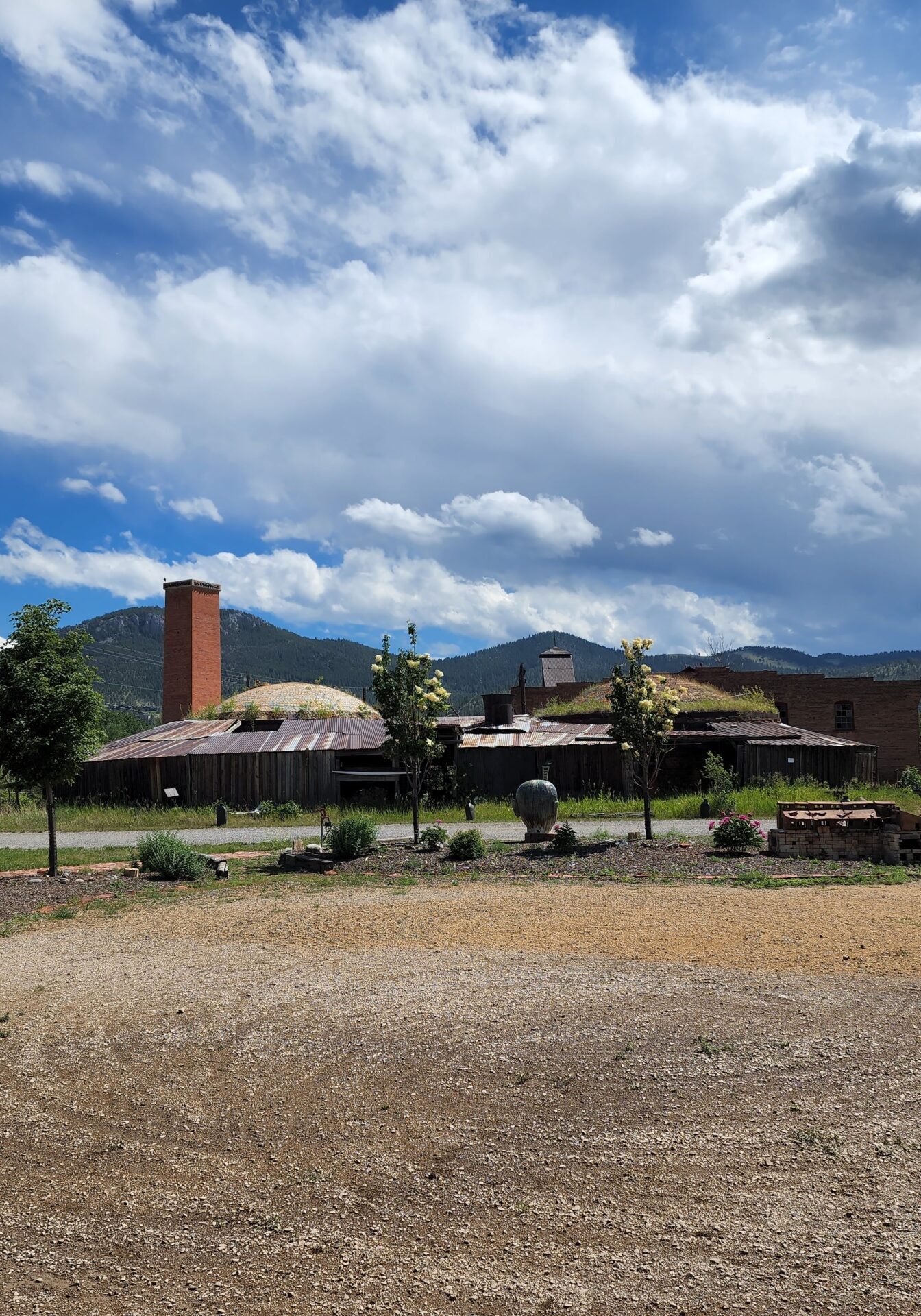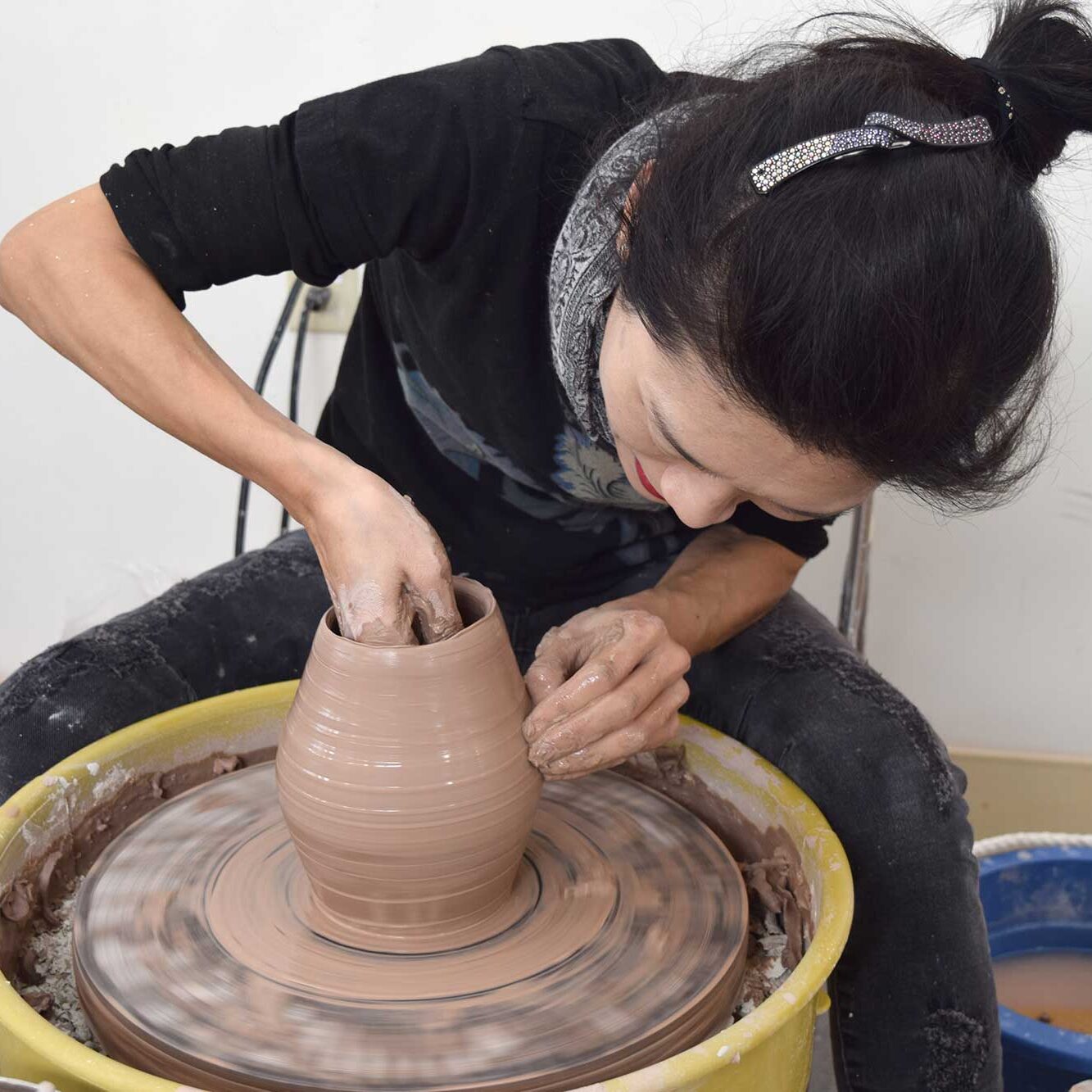
A Commitment to Indigenous Representation at The Bray
Near the headwaters of the Missouri River, Helena, Montana sits in a valley at the base of the Rocky Mountains. Native Americans have inhabited this valley for more than 12,000 years; historically, it was not the permanent home of any particular tribe as the area was shared by Salish, Crow, Bannock, and Blackfeet tribal members. With eight tribal reservations — though none in Helena — many Native peoples continue to live and work in Montana.
The Bray is internationally renowned for its facilities and its support of emerging and established ceramic artists. However, we acknowledge our history is steeped in primarily Western and Far Eastern clay traditions, and to date there has not been a shared space to learn and share Indigenous ceramic practices and histories.
The Bray is honored and committed to work in partnership with with Indigenous artists Cannupa Hanska Luger and Raven Halfmoon to construct the first permanent Indigenous on-site presence, which will act as a living monument to house an ongoing Indigenous clay program and represent the first Indigenous-designed and run ceramics facility in the region.
At A Glance
-
About the First Fire Site
Based on traditional North American Indigenous designs, this new site will be built for the future and will incorporate new, repurposed and long-lasting materials to create a structure to host pit firing and for Indigenous artists to teach and explore firing techniques, sharing these technologies with The Bray’s clay community.
-
The Bray's Committment
The Bray is committed to this project, not only as an act of reparation and a gesture towards healing but also as an investment in a future that is stewarded by Indigenous community. We have granted a permanent space on our 26-acre property — a former industrial brickyard listed on the National Register of Historic Places — and have committed to continually program the space with Indigenous-led classes and Indigenous-centered events. We trust that these good intentions will prove to be important, not only for local tribes but for a global, Indigenized experience of earth, fire, and creation through clay.
Even before construction, community engagement will begin with site preparation, including regional tribes invited to participate in a land acknowledgement with the artists, honoring the land and the first peoples of this Nation. There will be Indigeous protocols and community celebration embedded in each phase of the site's creation.
About the Concept Artists & Production Team
The new pit firing site will be a test site for Indignous ceramic technologies. Luger has extensive experience building earth lodges as well as very large sculptural projects and Halfmoon has vast knowledge of large-scale building techniques and understands the needs of the community in the larger Helena area. Both Luger and Halfmoon will draw from knowledge of ancestral architecture to collaborate on the physical design, working with fabricators, engineers, architects, community and with The Bray’s on-site staff to construct a safe, honorable, and useful space.
Luger and Halfmoon will work with The Bray’s Special Projects Manager and Education Manager to develop the blueprint for future programming and to implement protocols around the site’s use.
-
Raven Halfmoon
was a 2022 Invited Visiting Artist at The Bray and was a long-term artist in residence at The Bray (2019-2022). She is an enrolled member of the Caddo Nation in Norman, Oklahoma where her mother is a culture bearer. At the University of Arkansas, she earned a double Bachelors Degree in ceramics/painting and cultural anthropology. Her ceramic work is exhibited internationally; it is primarily figurative, often large-scale, and stylistically distinct, bringing traditional Caddo clay techniques to a contemporary audience. Halfmoon is a recipient of the 2022 Groot Foundation Award.
More About Raven -
Cannupa Hanska Luger
was a 2021 Invited Visiting Artist at The Bray. A multidisciplinary artist who works primarily in ceramics, Luger is an enrolled member of the Three Affiliated Tribes of Fort Berthold (Mandan, Hidatsa, Arikara, Lakota). Through monumental installations and social collaboration, Luger activates speculative fiction and communicates stories about 21st Century Indigeneity, combining critical cultural analysis with dedication and respect for the diverse materials, environments, and communities he engages. He lectures and produces large-scale projects around the globe and his works are in many public collections. Luger is a 2022 Guggenheim Fellow, recipient of the 2021 United States Artists Fellowship Award for Craft and was named a 2021 GRIST Fixer, he is a 2020 Creative Capital Fellow, a 2020 Smithsonian Artist Research Fellow, and the recipient of the Museum of Arts and Design’s 2018 inaugural Burke Prize, among others.
More About Cannupa -
Garron Yepa (Associate AIA, AICAE, Project Designer)
Garron Yepa was born and raised in New Mexico. Both Navajo (Diné) and Jemez Pueblo (Towa), he brings his cultural and regional knowledge to every project design. He has fed his exploratory education with extended stays in New Hampshire, Fairbanks and the interior of Alaska, and New York City - always returning home to restore his grounding attendance in his communities. At his current position, Garron works on a wide range of projects for academic clients, cultural institutions and tribal communities. Garron is an active member of the American Indian Council of Architects and Engineers and encourages the next generation of indigenous designers with his endeavors.
-
Steven Young Lee (Special Projects Manager at The Bray)
Steven Young Lee served as the Resident Artist Director of the Bray for 15 years and is currently the Director Emeritus and Special Projects Manager. Lee has maintained an active studio practice and has lectured extensively in North America and Asia. In the Fall of 2016 he was one of four artists featured as part of the Renwick Invitational at the Smithsonian Museum in Washington, D.C. His work has been collected by the Smithsonian Museum, the Los Angeles County Museum of Art, Crystal Bridges Museum of Art, the Portland Art Museum, the Four Seasons Hotel in Seoul, Korea, and many public and private collections. Originally from Chicago, he lives in Helena with his wife, Lisa and their two children Gavin and Florence.
